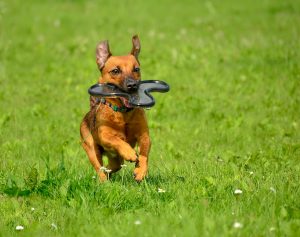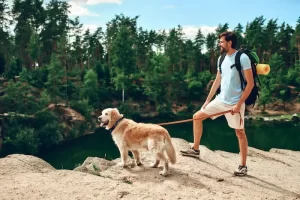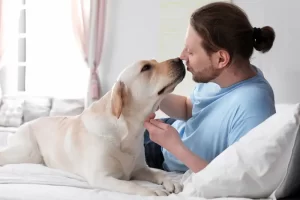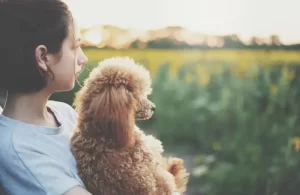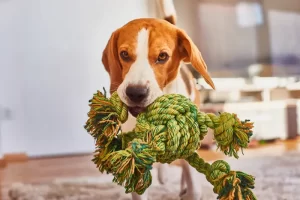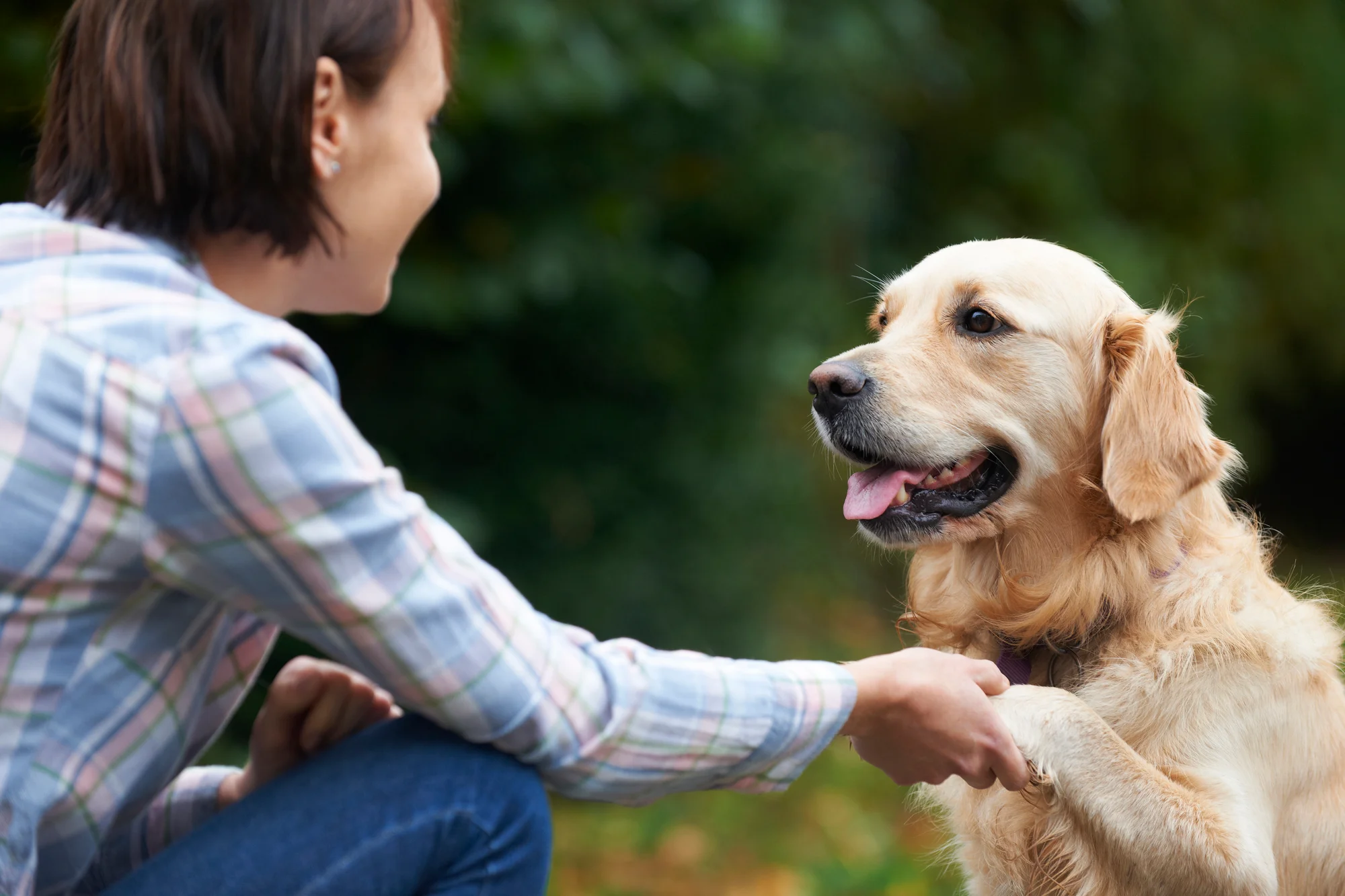
Dog training is a great way to bond and have fun with your pup. At the same time, teaching your dog tricks isn’t just about showing off your adorable pup’s smarts. The right dog tricks can actually help your pet behave better in all types of situations. Most dogs are quick learners in the right circumstances, so start with this comprehensive list of tricks to teach your dog if you’re trying to encourage good behavior and connect with your pup on a new level.
How to Succeed When Teaching New Dog Tricks
Most dogs can learn new tricks at any age, whether you have a brand-new puppy or a senior dog that needs a manners refresh. These tips from dog masters can help you set the best possible foundation when trick training, from the most basic tricks to complex commands.
Start Early
The American Kennel Club says dogs can start learning the easiest tricks around 8 weeks of age. Not all dogs receive training when they’re young, though, so don’t be discouraged if you want to teach your older pup a great trick or two.
Know How Most Dogs Learn
For successful training, you’ll need to understand the psychology behind how dogs learn. While humans draw knowledge and wisdom from our memories of the past, dogs master new skills by associating two experiences that occur at the same time.
You can use this understanding to target your training to the way dogs learn. Follow the “cue, action, reward” framework. First, give your dog a verbal cue that triggers a specific action. When your dog performs the intended behavior — for example, putting its rear end on the floor — provide a reward like a high-value small treat.
Appeal to Your Dog’s Nose With a Favorite Dog Treat
Give positive reinforcement in the form of a treat each time your dog does a new trick. Never scold or punish your dog during training, as this can damage your relationship and make it more difficult to teach your pet good, safe behavior. Praise your pup frequently when teaching a new dog trick. Seasoned dog owners know that petting your pooch and saying “good dog” in a friendly voice can go a long way when teaching your dog a new command word.
Take Advantage of Tech Tools
Using a GPS-based collar like the Halo can teach your dog to stay within appropriate boundaries and perform the intended actions when you’re training new tricks.
Stay Positive
Keep training sessions short and sweet. Your pup should be engaged and having fun. Ending on a good note encourages your dog to enjoy training and learning new tricks to show off.
Finally, be consistent when trying to teach new behaviors. No matter how much your dog loves tricks, most pets do best when you spend time training for about 10 minutes a couple of times a day.
Challenge your dog with new tricks. Your pup sees each command word as a puzzle to unlock. The training process helps keep your pet intelligent and focused, which allows you to progress beyond basic commands to teach your dog some seriously cool tricks. Teaching your dog tricks also increases its patience, which helps with impulse control and can keep it safe.
Best Behavior Tricks to Teach Your Dog

Sit
What could be cuter than seeing your dog sit with ears raised, awaiting further instructions? Not only is it easy to teach your dog to stay in a sitting position, it’s also one of the most useful tricks to teach your dog.
You might want your pet to stay put for a variety of safety reasons, like when you’re opening the door for a guest or have your hands full with a hot platter. Adding “stay” to the sit command can make a dramatic difference in your dog’s behavior.
The sit position is also one of the basics of dog training, so once your dog understands the trick through positive reinforcement, you can adapt the same technique for other tricks. Use these simple steps to teach easy tricks like sitting:
- Start by leashing your dog and giving it just enough space to move around, but not to jump up.
- Then, hold a treat close to its nose, which encourages it to naturally take a sitting position.
- When your dog successfully sits, say “sit” in a positive, friendly voice so your dog begins to understand the verbal command.
- Repeat several times with the treat until your pup learns to sit without the treat.
Stand on Hind Legs
The same process works if you want your dog to get in a standing position. From there, you can train your dog to take a bow and even automatically walk backward on its hind legs.
Simply place the treat in front of your dog’s nose when your pet is in a sitting position. Then, slowly raise it until your dog is fully standing. For the backward trick, slowly move forward with the treat in your hand so the dog backs up. To get your pup to bow, bring the treat back down toward the floor.
Lie Down
Next, grab another dog treat and teach your how to lie down. Provide positive reinforcement when your dog gets in the lying position. You can also build on this trick to teach your dog to roll over and play dead.
Shake Hands
Teaching your dog to “shake hands” is a natural next step after it learns to sit. For this trick, hold the treat in a closed hand and then have your dog get into the sitting position.
Next, bring your hand close to your dog’s nose. Your pet will try to get the treat, which creates the characteristic paw shake motion. Like with sitting, say your verbal command when your dog reaches for your hand.
Repeat frequently until your pet learns to shake hands without the treat present. Then you can start showing your dog how to shake the other paw. It’s a good trick for your dog to know when you want to cut its nails or have it present its paw to the vet for a checkup.
Walk Nicely on a Leash
Strolls around your neighborhood will be much more enjoyable for you and your pet after leash training. While it’s not one of the most fun tricks to teach your dog, walking next to you rather than pulling on the leash can keep your pet from getting injured and possibly loose.
Good walking manners also involve remaining calm rather than barking and tugging when you encounter other dogs or people. To train this trick, bring treats when you walk your dog.
Each time your dog performs the desired behavior (heeling, for example), say the associated verbal cue and provide a treat. Eventually, you’ll notice that your pet shows better impulse control on each walk even when you don’t have snacks at the ready.
Perform Hand Targeting
Hand targeting is a useful dog trick that teaches your pet to touch your hand with its nose when you give the cue. Teaching this easy dog trick can also give your buddy the skills it needs to master other fun tricks. It can also help you improve your pet’s behavior by distracting and redirecting it from unwanted actions like rushing toward a visitor or jumping on furniture.
Using the cue, action, reward framework you learned above, open your hand by your dog’s nose. Make sure you have a dog treat in the other hand. Then, give your dog the reward along with lots of positive reinforcement when its nose touches your palm. Repeat the touch trick until your pup gets the hang of it without the treat by incorporating a cue like “hand” or “touch.”
Spin in a Complete Circle
You can use your dog’s hunting instinct to teach this hilarious game. First, place a treat in your hand so your dog can smell it. Once your dog makes it clear that it notices the food in your hand, create a wide, horizontal circle parallel to the floor with your arm.
Your dog’s nose will naturally follow as it makes a complete circle and tries to get the treat. When it gets the idea, add the “spin” command. You can even teach your dog to go counter-clockwise with a command like “backward” and a hand gesture in the opposite direction.
Fetch
Playing fetch with a tennis ball is a great way to enjoy time with your dog. For this fun trick, grab your pup’s favorite toy and toss it a short distance. Most dogs automatically go after the ball or item.
Once your dog learns to pick it up, it’s time to add the “come” command. Give your dog lots of pets and delicious treats when it gets it right.
For the final step, add the “drop it” cue. You can teach your dog to give the tennis ball back so you can throw it again and again for lots of quality time together.
Time to get started!
Training your dog to perform tricks is a great way to bond with your furry friend while also encouraging good behavior. With the right techniques and understanding of how dogs learn, you can teach your pet a variety of tricks from sitting to fetching. Remember to keep training sessions short, use positive reinforcement, and be consistent in your approach.
By incorporating these tricks into your dog’s routine, you’ll not only have a smarter and more focused pup, but also one that’s better behaved and a joy to be around.

